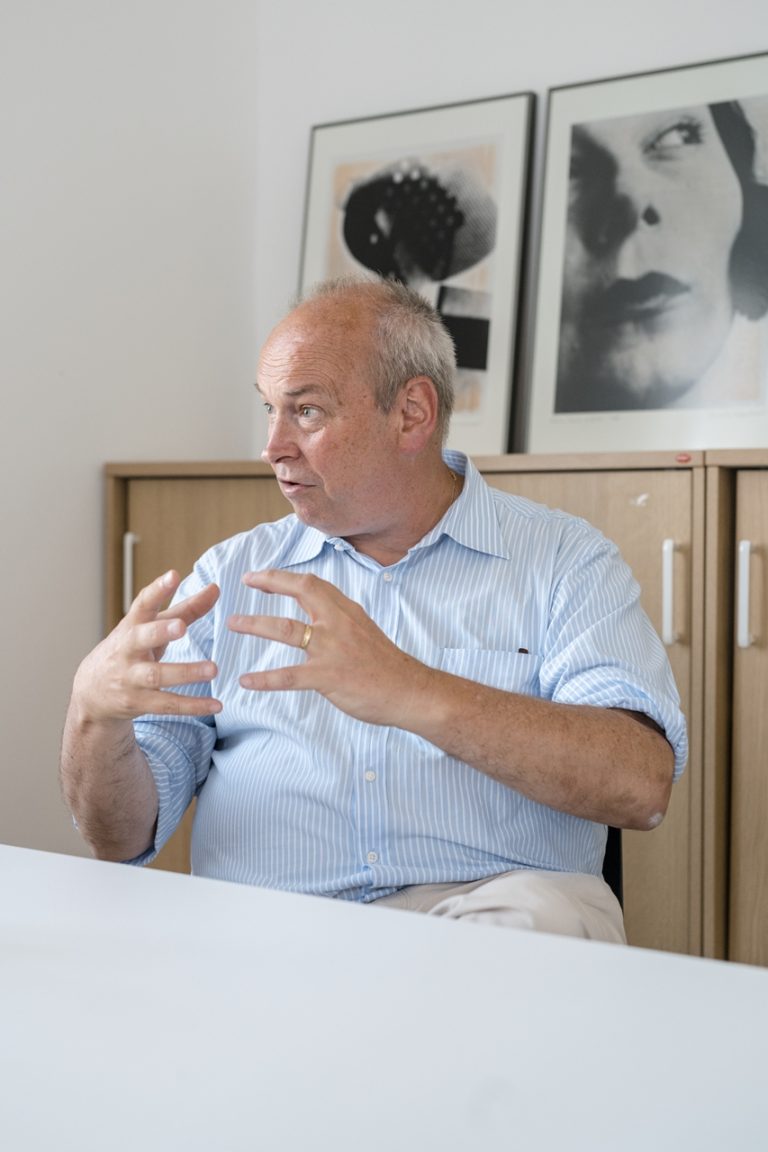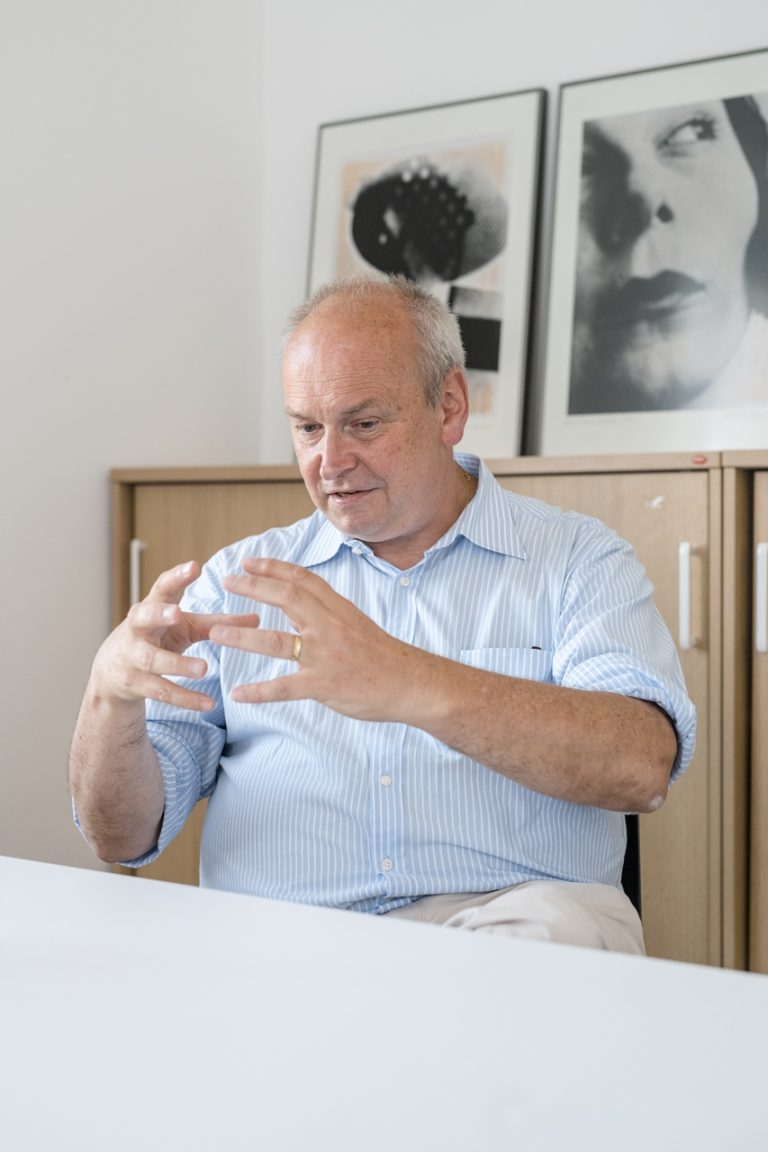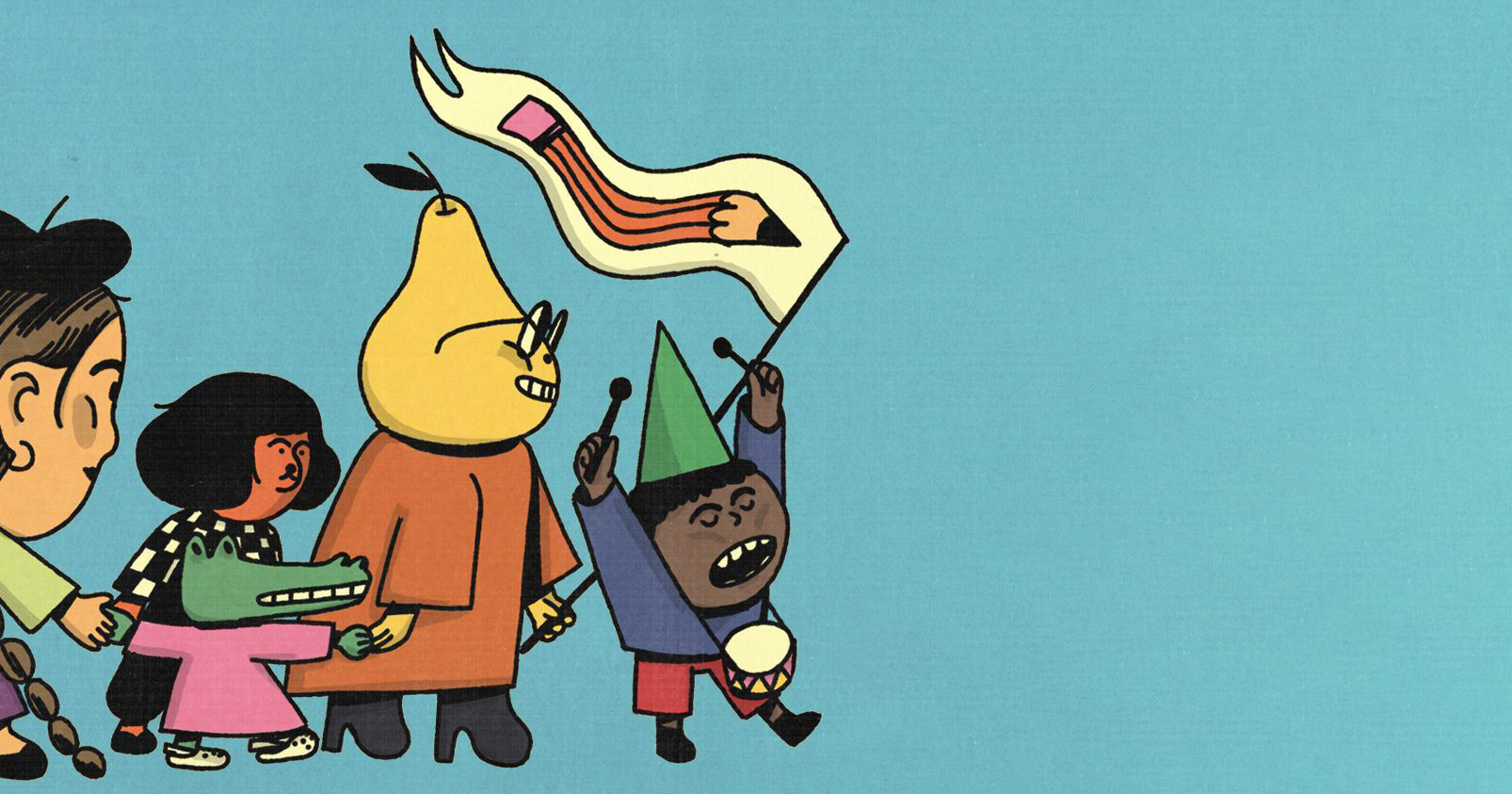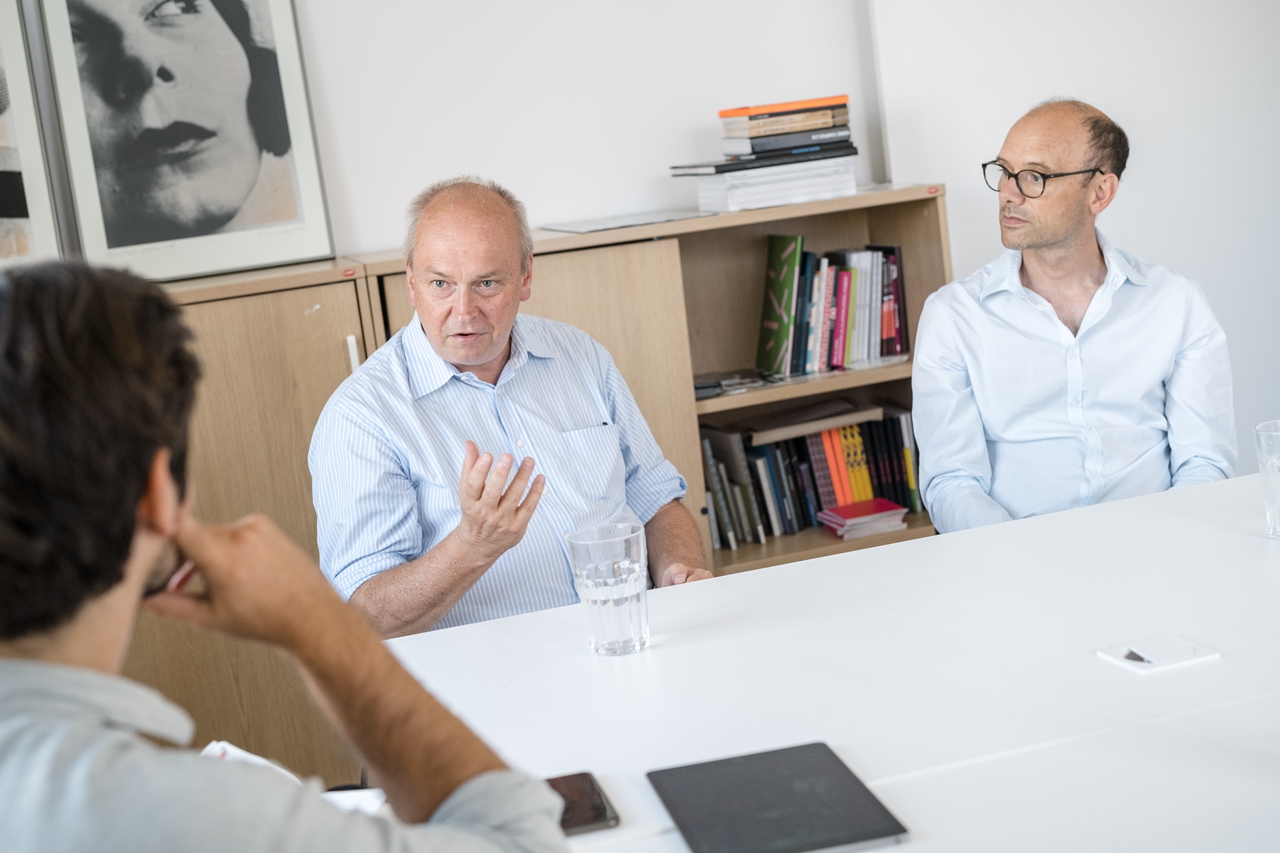
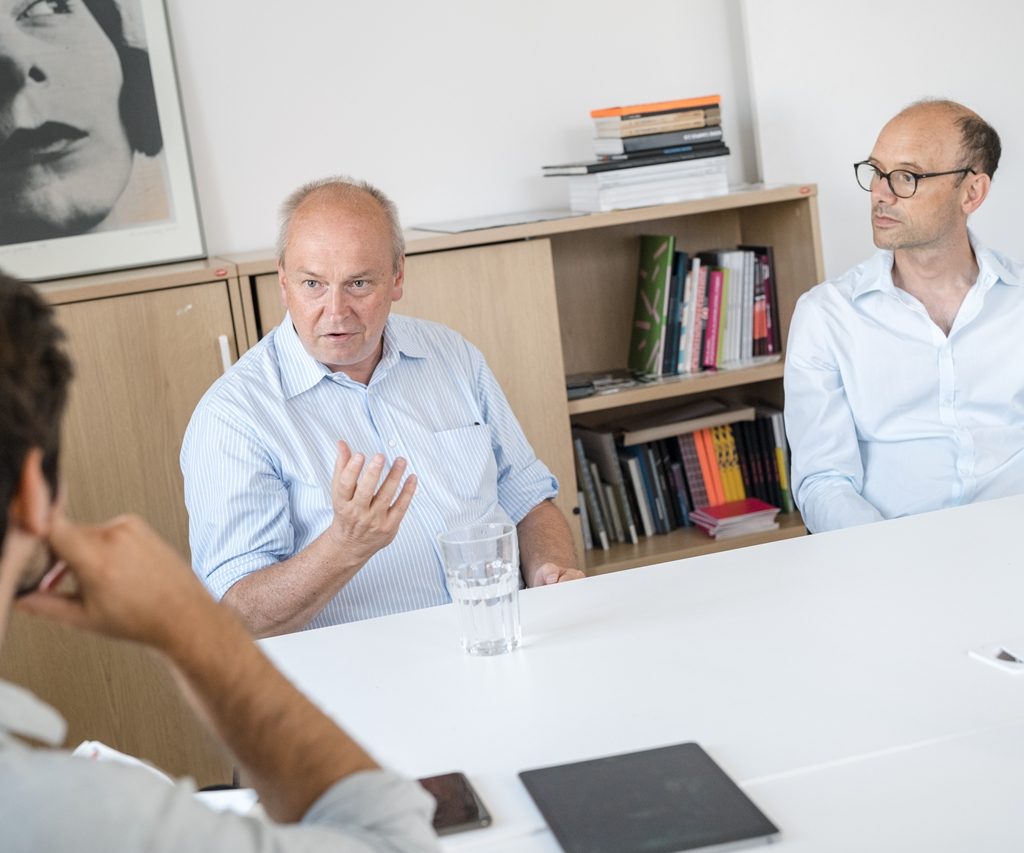
Design as strategic tool – Interview with Thomas Fundneider and Markus F. Peschl
Thomas Fundneider and Markus F. Peschl, founders of the theLivingCore Knowledge and Innovation Architects, an organizational design and innovation consultancy, are primarily interested in practices of radical innovation and in the development of enabling spaces. The company´s claim is “enabling desired futures”, and its strategy relies on a holistic approach blending cognitive science, innovation and design. They have recently completed their work with Moholy-Nagy University of Art and Design Budapest (MOME), so we had the opportunity to ask them about concepts of organizational design, “enabling spaces” and “emergent innovation”.

Markus F. Peschl
How can we grasp the concept of organizational design? It’s not an area of design that we cover very often at Designisso. You also refer to yourselves as “knowledge architects”. What does that mean?
Markus F. Peschl: The Greek roots of the word “architect” point to the concept of an overall designer. In my understanding organizational design is concerned with the “architecture” of an organization. Not only in the sense of physical spaces, but in a more holistic, integrative perspective, which involves people, services, processes, culture, social structures as well. We are usually co-creating an overall future purpose for an organization, and orient all these dimensions towards that purpose.
Can we define design as a strategic tool in that sense?
Markus F. Peschl: Yes, we should.
One of the key concepts within the organizational design framework you developed is “enabling spaces”. As far as I know, contemporary design theory is very much concerned with topics of embodied knowledge and non-discursive ways of knowledge production that emerge during the design process itself or through the interactions with designed objects and spaces. Is that a right entry point to understand your concept?
Markus F. Peschl: Absolutely, this taps right upon the foundation of the concept. My background is in computer science, and only later did I develop an interest towards philosophy, humanities and cognitive science. In cognitive science we speak about the “4E cognition” approach, which states that cognition and knowledge is embodied, extended, enacted and embedded at the same time. Whereas the classical idea would suggest that you perceive the outside world, and knowledge is created only through cognitive processing.
The more novel approaches assume a closed loop, where the brain, the body and the environment play an equal role. I think, for an architect or a designer it is very obvious, but for cognitive scientists, it was not evident for a long time.
We are actually enacting the world in social sense-making processes. We are appropriating the world for ourselves by creating internally and externally. So the question is how you change the world and how this changed world influences you. The basic idea is that knowledge is not about representing the world, but rather about dealing with the world in a sensible manner. That is at the heart of our enabling spaces approach. It’s not only about the built physical environment, but much more about the culture, social processes, mindsets and technological foundation of an organization. Everything what is created has an impact on your own cognition. This makes a clear connection to design theory.
How does this relate to strategic thinking?
Thomas Fundneider: Innovation processes are usually very cognitive, very “brain-centered”, in the sense that they rely on a lot of abstract thinking and reframing. At theLivingCore we try to enable new techniques that help to bring the innovation processes much closer to the individuals. The experience should be very specific, because we want to break the usual patterns of perception and thinking in order to be able to perceive radical novelty.
Markus F. Peschl: As crazy as it may sound, we ask our clients to go out into the nature and “learn to observe”. It’s about learning how to observe very simple or even common things. It’s necessary because they have to re-learn deep observation in order to be able to innovate.
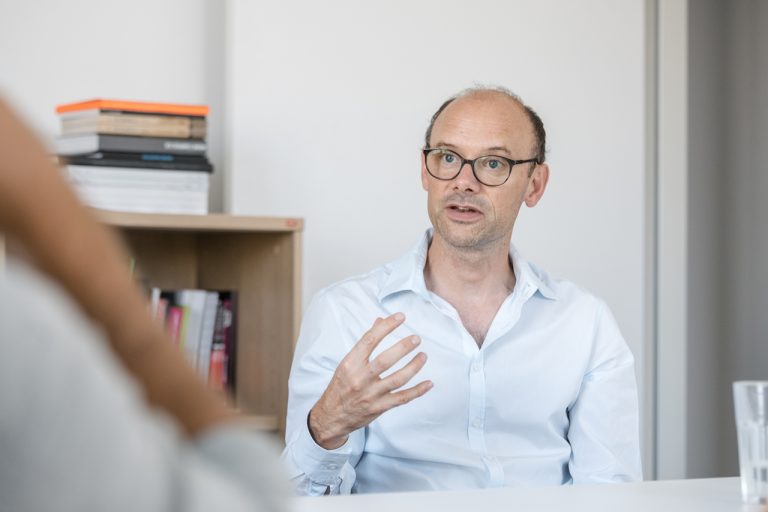
Thomas Fundneider
Thomas Fundneider: When people come back, they report what happened. Someone described, how she saw a wild animal or studied the clouds in the sky, and how a new idea popped out of that.
It is really interesting how people connect to these physical sensations and not only to the cognitive side of “thinking”.
This is not only important because of establishing new connections to the environment and to your own body, but also because the long-term impact is much stronger and the gained knowledge stays longer in this way. Ideas come and go, but a multisensory experience and this state of resonance leads to stable and authentic knowledge.
Markus F. Peschl: Well, this is a rather experimental part of our methodology. But we should not forget about the social dimension of knowledge creation. Everyone has a very different, unique perspective, so we have to listen to each other in a very attentive manner to be able to understand. This happens in what is called a dialogue, and it is crucial for the discovery of our own restricting patterns and expectations. We initiate a process of reflection and interaction among the team members.
It seems to be key to your organizational design approach to go beyond the cognitive sphere…
Markus F. Peschl: Definitely, that’s one of our “key ingredients”, although our processes are, in many cases, very cognitive, but at some point you have to really leave that behind in order to radically change the established modes of your working and thinking.
How many people can you reach within an organization?
Markus F. Peschl: We usually work with small teams of 8-12 people. But they often act as advocators or catalysts, and bring this kind of thinking and mindsets into their peer groups or departments, so the effect gets multiplied within the organization.
Thomas Fundneider: In our experience people stay inspired and try to realize their ideas from within the current structure of the company. Sometimes they indeed do it like an “underground work” despite the lack of official support, because they have an inner drive and believe in their ideas and proposals.
Creativity is infectious, one might say, but can single individuals really transform an organization from within? You also have another core concept besides “enabling spaces” called “emergent innovation”. How does that connect to the topics we are talking about?
Markus F. Peschl: It’s very much connected, because it brings in the dimension of the future. Transformation always happens between a “here” and a “there”. The really difficult part of the job is to define this specific “there”. What should be the goal, what is the future purpose of an organization? Emergent innovation is about figuring out the future potentials which want to emerge from the current situation. Normally when talking about creativity we are focusing on the role of the mind: “I am the creative mind.” But we at theLivingCore say, no, that’s not how it works.
A large part of creativity actually draws from the environment.
So you have to develop a very deep understanding of the object you want to change or innovate, and then you can find out what the actual potential is that hasn’t yet emerged from that object. I think this is actually a very artistic approach. Looking for something which is there and wants to break forth, something that is “not yet”, that for whatever reason has not yet emerged.
I also have the assumption that creativity comes mainly from interactions and not from “pure” minds…
Markus F. Peschl: Exactly, creativity is not only in the head, but in the interaction. By interacting with the world – or enacting the world – you might discover novel potentials. Of course, you are still in charge by being open and creative, but you don’t have the whole responsibility for it. Novelty emerges from interaction by bringing to life what is “not yet” in a creative manner.
Thomas Fundneider: In a way one could say you are highly creative, but not in the sense that you are the only author of novelty.
It sounds like a critique of the individual artist or innovating genius.
Markus F. Peschl: Definitely it is. Especially in an organization. Perhaps as an artist this might be a bit different, but considering an organization, it is a very explicit and strong critique. Let me elaborate one more thought from cognitive science: what appears in your mind is mostly the prolongation or the extrapolation of already existing things. And there is a very good reason for that from a cognitive and neuro-science perspective. The predictive mind hypothesis claims that our brain does not perceive the world in a passive manner, like a camera does. It is exactly the other way around: our brain already has readymade hypotheses of the world, and it is looking for verifications of what is expected. This implies that we are mainly driven by our past experiences and only in very rare cases are we capable of being creative. That’s the biological foundation, and that’s why you really have to break up your patterns of thought in order to innovate successfully. Regarding our emergent innovation concept there is a sentence we use a lot: “learning from the future as it emerges.” The future is unfolding in every single moment. We have to learn from this process of emergence when we try to innovate.
In one of your more recent articles you use the notion of “noch nicht” or “not yet”. I understand this to be the main temporal dimension of your operation at theLivingCore.
Markus F. Peschl: I use this “not yet” exactly to express the latent aspect of things. Something that wants to break forth from potentiality to actuality. From a philosophical or theoretical point of view this is what we are really interested in. The core of our innovation process lies exactly in this transition, or to be more precise, in enabling this transition from future potentials to their realizations as thriving innovations.
To me that also resembles speculative design. An approach that aims to initiate discussions about emerging social-technological tendencies and plays with open ended scenarios.
Thomas Fundneider: I think there is a connection, but the result is different. Speculative designers usually make statements by deeply understanding a certain topic and provoking current discourses. Actually, we don’t want to provoke, but want to bring a company forward.
Our design approach is more integrative than provocative.
We try to crystallize goals which might be completely different from what the organization is currently doing, but are still connected to the legacy and the core of the organization.
I’m also wondering how your emergent innovation method relates to the mainstream of today’s innovation culture or the so called “Californian ideology”, where iPhone 10 is followed by 12, 13, etc. This approach seems to mirror a rather linear or deterministic perception of the future.
Markus F. Peschl: There are at least two main avenues how to think about innovation. One avenue represents this linear thinking, which is basically incremental innovation. The other is the radical innovation approach. Normally, when you do radical innovation, you have some creativity workshops, some out-of-the-box thinking and so on. Then you might come up with some more or less interesting ideas. But the process doesn’t have a lot of foundation. And that’s where emergent innovation comes into play. It appears on the verge of already given things, on the one hand, and the things that are “pulling us” from the future, on the other hand. This tension is exactly what we are trying to make use of. That’s the most demanding part, and I haven’t met many people capable of sustaining and doing this, because it takes a lot of cognitive and social effort, and also requires a very personal involvement and even personal transformation. You can’t do it just like a “Californian” design thinking exercise.
You have to go further and engage in a process of personal change.
Thomas Fundneider: I think the iPhone is perhaps not the best example, because at the beginning it really created new meaning, and it is also obvious that a company tries to optimize its products from time to time. I would rather criticize the tremendous number of apps coming from Silicon Valley. They’re making use of existing technology, regardless of their meaningfulness or purpose. These companies conduct some user research and say, OK, if there are enough users to pay for it, then we are doing it. In contrast, emergent innovation deals first with the future and purpose of an innovation object. This may be seen from the outside as a slow start, but I guarantee you that this pays off in the later stages of the innovation process.
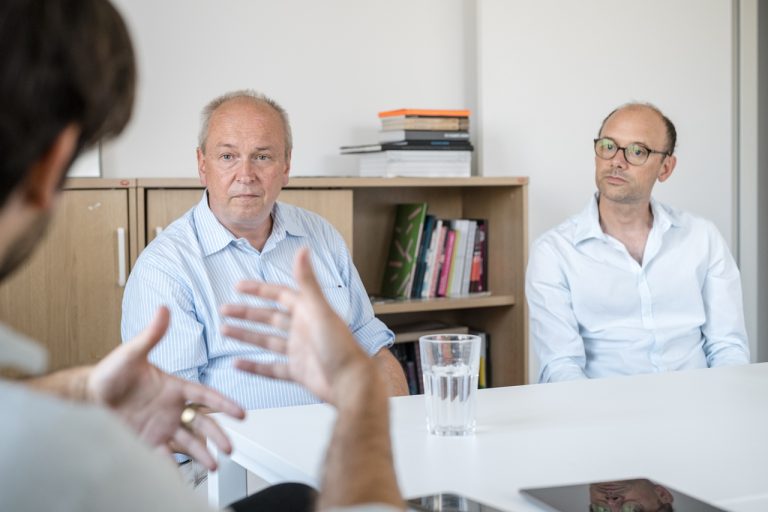
Can you tell a bit about your recent collaboration with MOME Innovation Center?
Thomas Fundneider: We focused on the Innovation Center and its positioning for the future. Context is crucial here, because the Innovation Center is not standing alone, but is highly connected to the academic part of the university and also seeks partnerships on the market. We invited several stakeholders into the research process and worked out the Innovation Center´s core processes as the leading foundation for all next steps. Based on the results we can now think more clearly about the design of physical spaces, social interactions, working mechanisms and organizational structures. We linked the parts and created a more coherent picture and profile.
Markus F. Peschl: The really interesting aspect of the Innovation Center is that it could become the “lighthouse” of the university, since many art and design universities are offering similar educational programs, but just a few have something like a dedicated research and development center. I can see a lot of potentiality. There is space for speculative formats and at a university it is even more crucial to train our thinking in the realm of “not yet”.
// /
